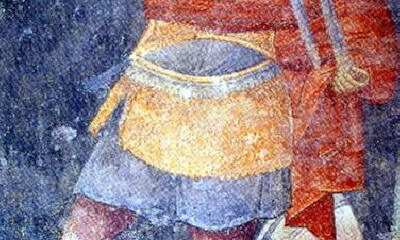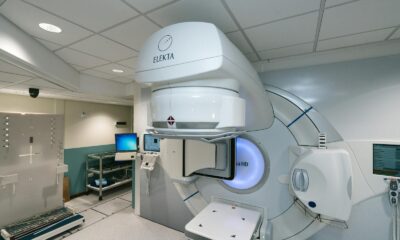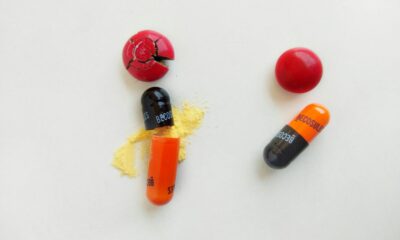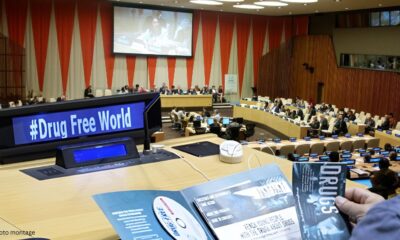Health & Society
Scientology volunteers at Health Fair in Denmark do their part before International Overdose Awareness Day
COPENHAGEN, COPENHAGEN, DENMARK, August 30, 2023/EINPresswire.com/ — A contingent of deeply concerned Scientology volunteers with the Copenhagen chapter of the Foundation for a Drug-Free World recently brought their urgent “Say No to Drugs” initiative to a major community health fair in the city.
While there is one International Overdose Awareness Day which is celebrated every year, Scientologists don’t take it mild, execute preventive actions all year round. But how did the International Overdose Awareness Day come about? International Overdose Awareness Day takes place annually on August 31st with the aim of raising awareness about overdoses and combating the stigma surrounding drug-related deaths. This meaningful event was initiated in 2001 by Sally J. Finn in Melbourne, Australia. following the loss of her son, James to a heroin overdose. The inaugural International Overdose Awareness Day event in Melbourne attracted 150 participants and marked the beginning of a global movement. By 2002 events were being held in the UK and Europe while the US joined in by 2004. Over time, International Overdose Awareness Day expanded to more than 40 countries and gained official government recognition and support.
The primary objective of this awareness day is to combat the stigmatization associated with overdose deaths and educate individuals, about the risks involved not just in overdosing but in taking drugs per se, and discussions centred around evidence-based overdose prevention strategies and drug policies. Activities organized as part of this initiative include candlelight vigils, policy debates naloxone training sessions (a medication used to reverse overdoses) memorial services and various community gatherings.
But for the Scientologists, this is a daily battle that they started even before 1966 when they established the first drug rehabilitation centre known as Naronon, which has expanded to dozens of centres worldwide, in addition to the global prevention campaign.
The outreach covered in this story aims to actively spread awareness and provide solutions to the country’s youth as substance abuse has emerged as an escalating epidemic and one of Denmark’s most dire threats.
The volunteers invited families and youth attendees at the packed fair to spin a “roulette wheel” game in order to raise charitable donations benefiting the non-profit sponsoring the event. However, they also creatively utilized the gripping activity to vividly demonstrate how taking drugs equates to recklessly gambling with your life given the myriad harmful and even deadly effects of various illicit substances.
The interactive demonstration specifically targets young students before they ever begin to experiment with recreational drug use that could permanently destroy their futures.
According to concerning reports widely covered in Danish local media recently, dependency and outright addiction to opioid-based pills has become highly prevalent among the country’s teenagers and children as young as 14 years old. Numerous young students have confessed that they feel completely unable to even function, get out of bed, or attend school without the aid of opioids just to start their day.
The rampant addiction crisis has spread like wildfire among expansive social networks where youth openly acknowledge that virtually everyone has easy, unrestricted access to the dangerous pills that fuel crippling addiction. Experts state that the proliferation of teenage opioid abuse may represent one of the most critical threats facing Denmark’s future stability, prosperity, and health.
Alarmed by the unprecedented scope and growth of the drug crisis, Scientology volunteers are working actively to reach young people nationwide with factual data and knowledge about the immense risks posed by the most commonly abused narcotics before permanent and irreparable addictive behaviours take hold.
The Foundation for a Drug-Free World provides comprehensive drug education and prevention materials in 20 languages completely free of charge, including extensive online courses and booklets. The global non-profit boasts a network of over 200 chapters across dozens of countries worldwide, thanks to the staunch support of the Church of Scientology and its legions of committed volunteers.
Scientology founder L. Ron Hubbard identified recreational drug abuse as one of the single most corrosive elements present in modern culture that actively works to unravel the social fabric of families, communities and entire nations. “Drug addiction and substance abuse fuel criminality while destroying lives and squandering human potential on a staggering scale globally,” said Ivan Arjona-Pelado, the President of the European Office of the Church of Scientology for Public Affairs.
“This is why the actions of the Foundation for a Drug-Free Europe and its hundreds of Say No To Drugs associations and groups of volunteers across Europe, aware that every year drugs destroy thousands of lives and hopes, are actively contributing through The Truth About Drugs campaign, to preventively educate the youth and the public at large with factual data on the harming effects of drug use” wrote said in a recent article Christian Mirre, Spokesperson of the Foundation for a Drug-Free Europe.
The Church of Scientology for Denmark, which opened its sprawling new ideal facilities in 2017, is deeply committed to sponsoring and vigorously promoting the volunteer outreach effort to combat drug addiction locally.
Countless Danish families have been torn apart by substance abuse and so Scientology volunteers aim to foster a drug-free generation by tackling the issue at its roots.
Scientology Network programming showcases the extensive work of Foundation volunteers using these drug prevention materials (known as The Truth about Drugs”) in schools and communities across various nations globally. The broadcast platform aims to satisfy curiosity about the true nature and beliefs of the Scientology religion, as well as share its staunchly humanitarian teachings focused on protecting human life, upholding human rights, and human dignity, and uplifting families and communities.
The mobilization of Scientologist volunteers at the Copenhagen health fair represents the latest action of the worldwide movement. For decades, the Church has made eradicating drug addiction and illiteracy the twin pillars of its social betterment campaigns.
In communities beset by substance abuse worldwide, Scientologist volunteers are working to provide facts, education and practical solutions together with members of different religions such as Christians, Buddhists, Hindus, Sijs, Muslims and others.
Health & Society
The benefits of bee-polen – the food that gives us everything we need
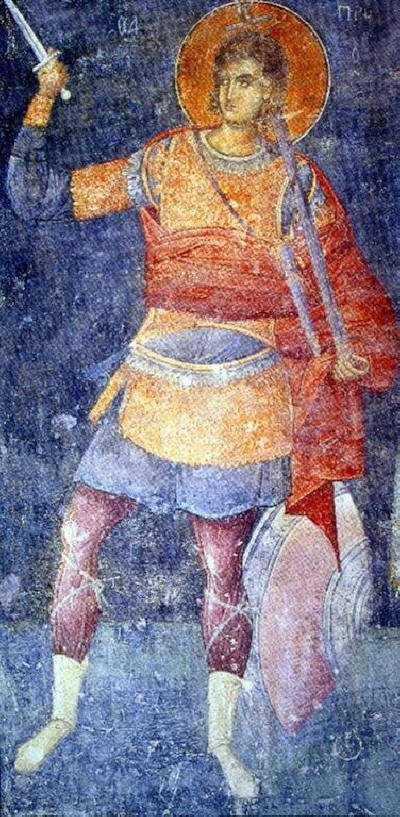
The pollen originates from those parts of the plant that are particularly important for the development of the plant species. Therefore, it contains substances of high biological value. Its composition varies greatly depending on the plants from which it is harvested. Fresh pollen contains the following ingredients:
• protein substances (22-40%), including the amino acids valine, tryptophan, phenylalanine, lysine, methionine, leucine, isoleucine, trevonine, histidine, arginine, glutamic, aspartic acid, etc.
• Sugars in the form of nectar carbohydrates (30 – 60 %)
• Vitamins. Bee pollen is particularly rich in vitamins that are absorbed by the bees’ body. Vitamins B1, B2, B3, B6, B7, B8, B9, B12, C, provitamin A (converted in the body into vitamin A), vitamin D, etc. have been identified. Rutin (vitamin P) reaches 60 mg per 100 g of pollen. It is of particular importance for the human body, as it increases capillary resistance
• Enzymes. Amylase, invertase, catalase, phosphatase, etc., which catalyze various chemical processes in the body, have been identified.
• Antibiotic substances. They come from both plants and bees. They stop the development of bacteria in the intestines. They are especially active against gram-negative bacteria, such as Escherichia coli, Salmonella ehteritidis and Proteus vulgaris, which are the causes of gastrointestinal diseases and urinary tract infections.
• Mineral substances. Potassium, calcium, phosphorus and magnesium are in the greatest amount. Manganese, zinc, cobalt, barium, silver, gold, vanadium, tungsten, iridium, mercury, molybdenum, chromium, cadmium, strontium, palladium, platinum and titanium have been found in small quantities. The amount of mineral salts is greater in pollen than in honey.
• Lipids, aromatic and pigment substances.
• Biologically active substances. Bee pollen contains from 0.60 to 4.87% nucleic acids, ribonucleic acids being more than deoxyribonucleic acids.
• Bee pollen is rich in the essential amino acids for life, which many times surpass the amino acids contained in beef, eggs and cheese.
If there were no other food sources containing amino acids, pollen could provide the human body with the minimum need for them through the average dose of 15 g per day. For example, 2 tablespoons of pollen equals the protein content of 140 g of pork steak, but without bad fats, chemicals and animal hormones.
Therapeutic action and application:
On the one hand, pollen has a high nutritional value – no other natural product can compete with it, but at the same time it is also a complete food thanks to its diverse ingredients. Pollen should also be considered as a natural “medicine-concentrate”, based on the large amount of enzymes, vitamins, antibiotic substances, trace elements, flavonoids, etc. contained in it – all of natural origin and in a favorable ratio with each other.
Pollen is used in the treatment of:
• Diseases of the small and large intestine.
• Possibility of using the pollen and perga in the treatment of diabetes, as it stimulates the release of insulin.
• Lowers the level of cholesterol, which is used in the treatment of atherosclerosis.
• Pollen is characterized by a low sodium content, but contains a lot of magnesium and potassium, which makes it suitable for the treatment of cardiovascular diseases.
• Pollen contains iron, which means that it can be used in the treatment of anemia.
• Thanks to the rich content of iodine, the pollen can be used in the prevention of endemic goitre.
• The pollen has a well-expressed anabolic (building) effect.
• It is used in the treatment of inflammatory and degenerative diseases of the liver.
• It has a normalizing effect on the nervous system.
Very good results are known in the treatment and prevention of pathological processes of the prostate gland such as hypertrophy. Bee pollen is used for gastrointestinal diseases, asthenia and states of mental and physical fatigue, which appeared as a result of various diseases, overloads, exhaustion (age-related and neurotic), etc. It is used for lack of appetite in children, delayed growth and delayed teething; it is included in the complex therapy of cardiovascular diseases, in the prevention and treatment of atherosclerosis, in liver diseases, climacteric disorders, etc.
Contraindications for treatment with bee pollen are allergy to it and severe damage to the renal parenchyma.
Pollen is considered to be completely harmless to the body.
It is suitable for treating liver diseases, atherosclerosis, lipidemia (increase in fat). With long-term treatment, it improves the condition of patients with prostate adenoma and prostatitis, depressive conditions and chronic alcoholism. An effective means of general strengthening of the organism.
Store in a dark and cool place.
Admission-
In the evening before going to bed, take a glass of water with one teaspoon of bee pollen and one teaspoon of honey, after it has dissolved and obtained a yellowish homogeneous mixture. Therefore, it is good to add the ingredients – pollen and honey – to a glass of warm water at least 15-20 minutes earlier. The spoon should not be metal.
Why evening?
Because of the whole range of vitamin B. It has a calming effect on the nervous system. It helps to sleep well.
Vitamins. Bee pollen is particularly rich in vitamins that are absorbed by the bees’ body. Vitamins B1, B2, B3, B6, B7, B8, B9.
Illustrative photo: St. Great martyr Procopius († 303) – patron saint of beekeepers celebrated on July 8 by the Orthodox Church. Fresco from 1315-1320 in the Hora church in Constantinople (Constantinople).
Health & Society
Researchers Use AI Tools to Uncover Connections Between Radiotherapy for Lung Cancer and Heart Complications
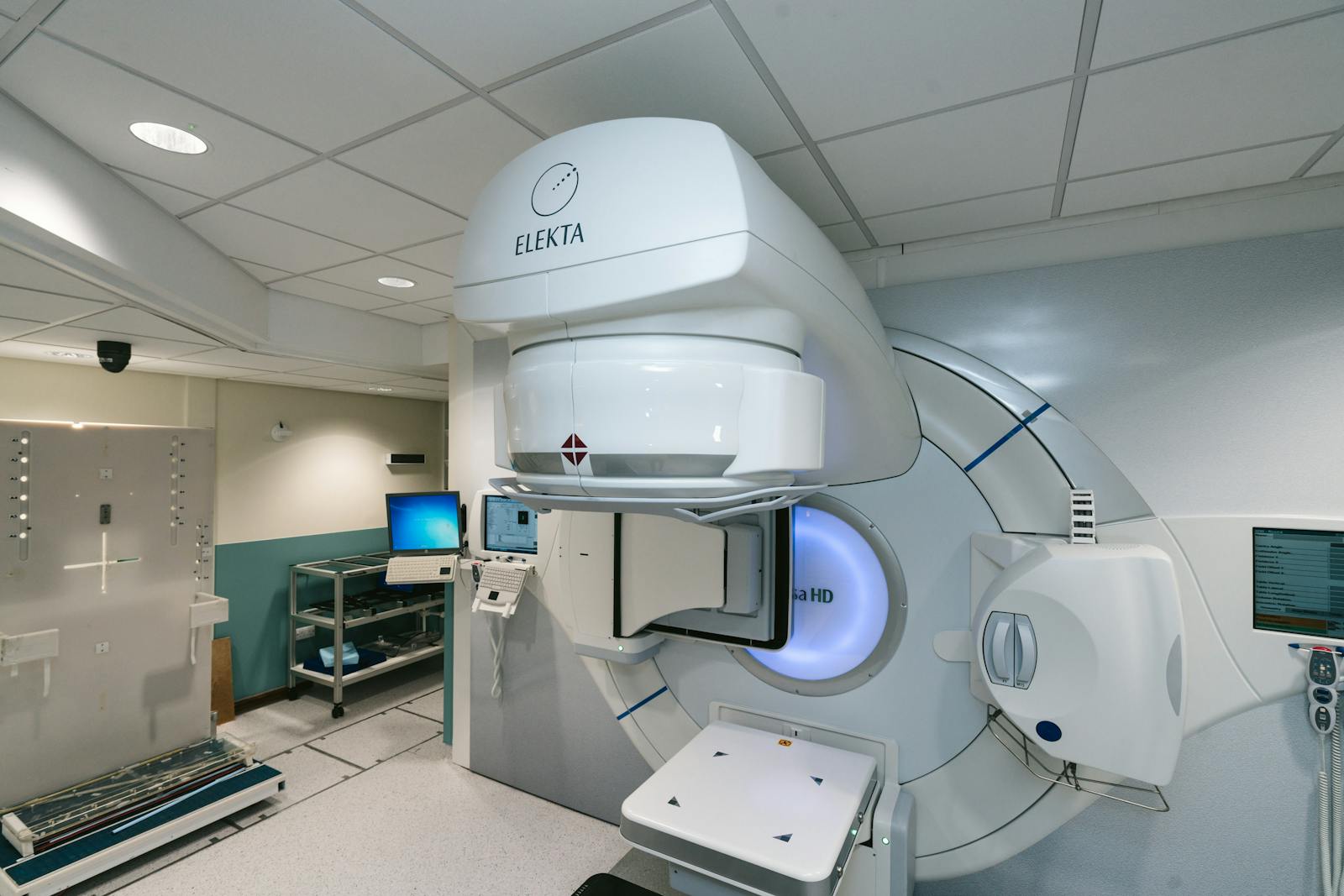
Researchers from Brigham and Women’s Hospital, a founding member of the Mass General Brigham healthcare system, have used artificial intelligence tools to accelerate the understanding of the risk of specific cardiac arrhythmias when various parts of the heart are exposed to different thresholds of radiation as part of a treatment plan for lung cancer. Their results are published in JACC: CardioOncology.
“Radiation exposure to the heart during lung cancer treatment can have very serious and immediate effects on a patient’s cardiovascular health,” said corresponding author Raymond Mak, MD, of the Department of Radiation Oncology at Brigham and Women’s Hospital. “We are hoping to inform not only oncologists and cardiologists, but also patients receiving radiation treatment, about the risks to the heart when treating lung cancer tumors with radiation.”
The emergence of artificial intelligence tools in health care has been groundbreaking and has the potential to positively reshape the continuum of care, including informing treatment plans for patients with cancer. Mass General Brigham, as one of the nation’s top integrated academic health systems and largest innovation enterprises, is leading the way in conducting rigorous research on new and emerging technologies to inform the responsible incorporation of AI into care delivery.
For patients receiving radiation therapy to treat non-small cell lung cancer (NSCLC), arrhythmias or irregular rhythms of the heart can be common. Because of the close proximity of the heart to the lungs and with NSCLC tumors being near or around the heart, the heart can receive collateral damage from radiation dose spillage meant to target the cancer tumors. Prior studies have found that this type of exposure to the heart is associated with general cardiac issues. However, this nuanced study demonstrated that the risk for different types of arrhythmias can vary significantly based on the pathophysiology and cardiac structures that are exposed to different levels of radiation.
In order to classify the types of arrhythmias that are associated with cardiac substructures receiving radiation, researchers conducted a retrospective analysis on 748 patients in Massachusetts, who were treated with radiation for locally advanced NSCLC. The arrhythmia subtypes cataloged included atrial fibrillation, atrial flutter, other supraventricular tachycardia, bradyarrhythmia, and ventricular tachyarrhythmia or asystole.
The team’s statistical analyses indicated that about one out of every six patients experienced at least one grade 3 arrhythmia with a median time of 2.0 years until the first arrhythmia. Grade 3 classifications are considered serious events that likely need intervention or require hospitalization. They also found that almost one-third of patients who experienced arrhythmias also suffered from major adverse cardiac events.
The arrhythmia classes outlined in the study did not entirely encompass the range of heart rhythm issues that are possible, but the authors note that these observations still create a better understanding of the possible pathophysiology pathways and potential avenues for minimizing cardiac toxicity after receiving radiation treatment. Their work also offers a predictive model for dose exposure and the type of expected arrhythmia.
For the future, the researchers believe that radiation oncologists should collaborate with cardiology experts to better understand the mechanisms of heart injuries and their connection to radiation treatment. In addition, they should take advantage of modern radiation treatment to actively sculpt radiation exposure away from the specific cardiac regions that are at high risk for causing arrhythmias. According to Mak, this study, alongside previous research, will help with surveillance, screening, and informing radiation oncologists on which parts of the heart to limit radiation exposure to, and in turn, mitigate complications.
“An interesting part of what we did was leverage artificial intelligence algorithms to segment structures like the pulmonary vein and parts of the conduction system to measure the radiation dose exposure in over 700 patients. This saved us many months of manual work,” said Mak. “So, not only does this work have potential clinical impact, but it also opens the door for using AI in radiation oncology research to streamline discovery and create larger datasets.”
Source: BWH
Source link
Health & Society
Beer, but warm – it helps the kidneys

Is it true that beer is good for the kidneys? Beer is associated with entertainment, evening gatherings and relaxation. At the same time, many myths and claims accompany this popular drink, including claims that it is good for kidney health. Let’s look at what is actually known about the effect of beer on the organs of the genitourinary system.
The myth of the benefits of beer for the kidneys The idea that beer can have a positive effect on kidney health is due to the content of antioxidants in the drink, as well as its diuretic effect. However, it should be clarified that beer consumption is not associated with benefits for kidney function.
Reality and negative impact: Dehydration. Beer, like any alcoholic drink, has a dehydrating effect on the body. Alcohol suppresses the production of vasopressin, a hormone that regulates fluid levels in the body. This can lead to more frequent urination and, as a result, dehydration. Dehydration can negatively affect kidney function and overall health. Adverse effects on the urinary tract. Beer can irritate the urinary tract, which can contribute to urinary tract infections. Alcohol can also make existing kidney problems worse. Effect on blood pressure. Excessive consumption of alcohol, including beer, can raise blood pressure. A constant increase in blood pressure can negatively affect kidney function.
Reasonable consumption
It is important to emphasize that moderate and infrequent consumption of beer, like other alcoholic beverages, often avoids serious health problems. However, avoid excessive consumption and remember that beer is not particularly good for the kidneys.
Other myths about beer
Beer can be drunk in large quantities because it contains a lot of water: Despite the high water content of beer, the alcohol in it has a dehydrating effect, which can lead to dehydration, especially if consumed in excess.
Beer is a good way to relax and de-stress: Although many may feel relaxed after drinking alcohol, this is often a temporary effect. Long-term or excessive alcohol consumption can actually worsen stress and mental health effects.
Beer dissolves fat: Many people believe that beer helps dissolve fat and helps flush it out of the body. However, this is not true. Beer, like other alcoholic beverages, contains calories and can promote fat storage.
Beer is a good source of vitamins and minerals: Beer contains some vitamins and minerals, but it is not the best source of nutrients. An overdose of alcohol can negatively affect the absorption of certain nutrients.
If you have kidney problems, blood pressure or other chronic diseases, it is advisable to consult your doctor before making changes to your diet or drinking habits. In general, it is better to maintain a healthy and balanced lifestyle without alcohol to maintain the health of the genitourinary system and the whole body. The article is for informational purposes only and is not a recommendation or a substitute for professional consultation.
Illustrative Photo by RDNE Stock project: https://www.pexels.com/photo/friends-toasting-their-drinks-6174129/
-

 Health & Society7 days ago
Health & Society7 days agoPope Francis calls on religions to unite to reduce demand for drugs
-

 EU & the World7 days ago
EU & the World7 days agoAshanti & Nelly Welcome First Child Together & Reveal Baby Boy’s Name
-

 EU & the World7 days ago
EU & the World7 days agoDoes Travis Kelce Appear in Swift’s ‘I Can Do It With a Broken Heart’ Music Video?
-

 Sports7 days ago
Sports7 days agoAtalanta: PSG-Lookman, there is news
-

 Politics7 days ago
Politics7 days agoPoland’s Former Prime Minister Mateusz Morawiecki Eyes Leadership of European Conservatives and Reformists
-
EU & the World7 days ago
Mike Lynch Yacht Update: Fifth Body Recovered Off Coast of Sicily
-

 Sports7 days ago
Sports7 days agoDucati, Pecco Bagnaia-Marc Marquez duel: “Valentino Rossi ready to step in”
-
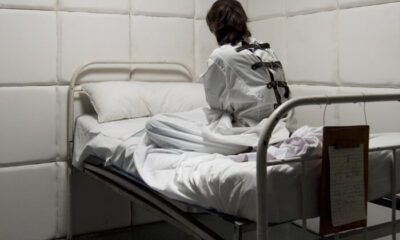
 Health & Society7 days ago
Health & Society7 days agoSexual abuse, electric shocks, chemical restraints in Mental Health Care, report finds



